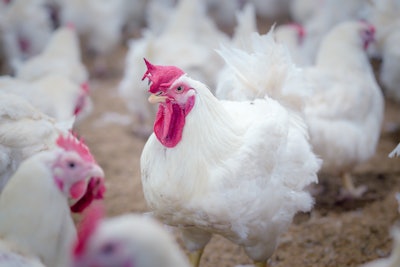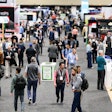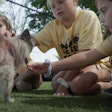
The integration of innovative technologies — from computer vision and digital phenotyping to machine learning and artificial intelligence — is enabling more precise, objective and balanced breeding decisions for the poultry industry than ever before.
These emerging tools are solving some of the industry's most persistent measurement challenges while accelerating genetic gains across the value chain, said Jesus Arango, DVM, Ph.D., director of research and development and head of global trait development at Cobb-Vantress.
"New methodologies are now available that allow for the collection of objective and accurate data, often in a high-throughput manner," he explained.
"This is especially important for hard-to-measure traits related to performance — such as growth, yield and feed conversion ratio — along with behavior, health and welfare attributes, which are often subjective and impractical to assess manually by humans."
At the 2025 Poultry Tech Summit, Arango will discuss how these new technologies not only enhance genetic selection but also offer new opportunities for poultry producers to improve bird performance across the value chain.
The Poultry Tech Summit, scheduled for November 3-5, 2025, at the Atlanta Airport Marriott in Atlanta, Georgia, brings together inventors, researchers, entrepreneurs, poultry industry professionals and established technology providers to discuss challenges and solutions for all aspects of the poultry supply chain.
Registration for this event is now open.
From subjective to quantitative
Computer-enabled vision systems, including cameras and CT scanners, represent a significant leap forward in phenotypic measurement. These technologies capture traits more objectively and accurately than human observation, sometimes in real-time.
Over the next decade, these technologies are expected to redirect breeding focus toward traits that current methods struggle to measure objectively. Characteristics related to behavior, welfare and health will become increasingly prioritized as new tools make them more measurable and quantifiable.
"Technology will facilitate a better balance between broiler and breeder traits, ultimately leading to the production of more robust and resilient breeders and broilers," Arango predicted.
In addition, while balancing diverse sets of phenotypes relevant to both broiler and breeder performance has historically been challenging, new data collection methods such as multi-omics, environmental monitoring and digital phenotyping could male this more achievable through their integration into selection decisions.
The impact extends beyond elite breeding populations at the top of the pipeline, providing new opportunities for poultry producers to improve bird health, welfare and performance downstream.
"This shift will lead to more accurate phenotyping than what was possible in the past," he added. "With more precise and quantitative traits available, we can expect a higher reliability in predicting breeding values for selection, resulting in faster rates of genetic gains than ever before."
Attend the 2025 Poultry Tech Summit
The Poultry Tech Summit will return as an in-person event on November 3-5, 2025, at the Atlanta Airport Marriott in Atlanta, Georgia. The Poultry Tech Summit brings together inventors, researchers, entrepreneurs, poultry industry professionals and established technology providers to discuss challenges and solutions for all aspects of the poultry supply chain. The event focuses on the transition of innovative technologies from researchers and entrepreneurs into commercial applications for the benefit of the poultry industry.
NEW in 2025, Poultry Tech Summit will be held in collaboration with the U.S. Roundtable for Sustainable Poultry and Eggs (US-RSPE) annual meeting held November 5, 2025.
Registration for the 2025 Poultry Tech Summit is now open. For more information, go to www.poultrytechsummit.com.

















